The Lay Carmelites of Divine Mercy meet the 3rd Saturday of the month, after 8:30 am Mass at
Christ the Good Shephard
18511 Klein Church Road
Spring TX, 77379.
Feel free to join us.

Reunion With Christ
Fr. Onesmus Muthoka, OCarm, Kenya
St Francis of Assisi Catholic Church
861 Wildwood Lane, Grapevine TX 76051
Read more: North Texas Region Lay Carmelite Day of Reflection April 29, 2023 Presentation
Carmelite Web Resources
The following list of web pages and descriptions provide access to important Carmelite recources. Click on the a blue title below to be taken to to that page.
The Official Website of the Carmelite Order.
- Lectio Divina at the Order of Carmelites Website
- The Carmelite Proper for Masses (includes the Carmelite Solemnities, Feasts, Memorials, and Optional Memorials):
Download: The Carmelite Sacremetary
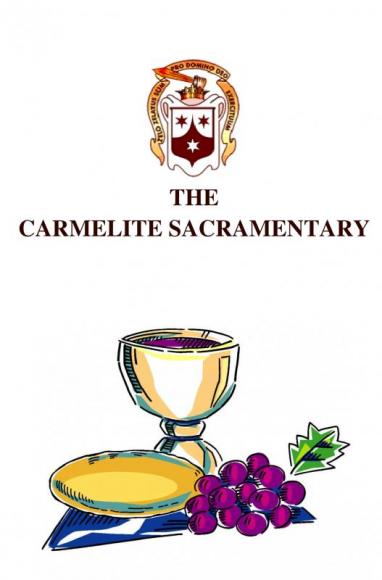
The Website for the Order of Carmelites Province of the Most Pure Heart of Mary.
The Province of the Most Pure Heart of Mary
- Carmelite Review - Magazine for the Order of Carmelites
- Order of Carmelites Website with many resources, including, history, media, vocations, discernment,...
The Website for the Lay Carmelite Office for the Province of the Most Pure Heart of Mary
The Institute for Carmelite Studies Publications
Carmel Spiritual Centre - A place for spiritual refreshment and growth
Carmelite Articles at the Carmelite Institute (Free Articles)
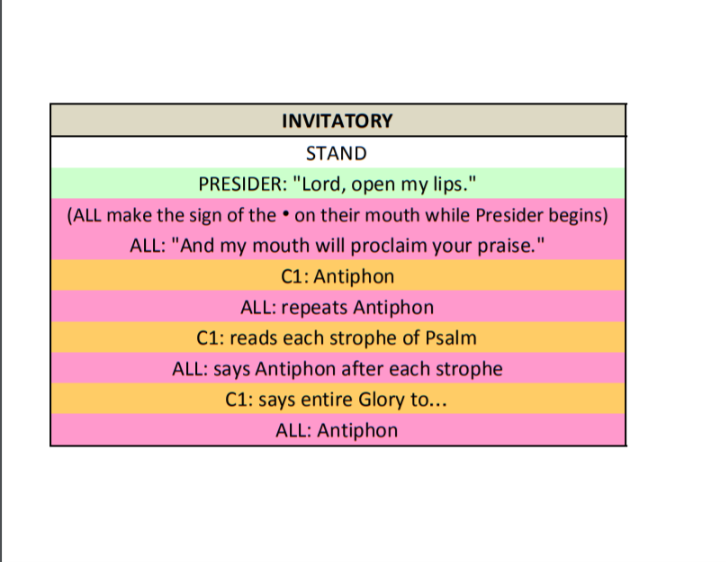
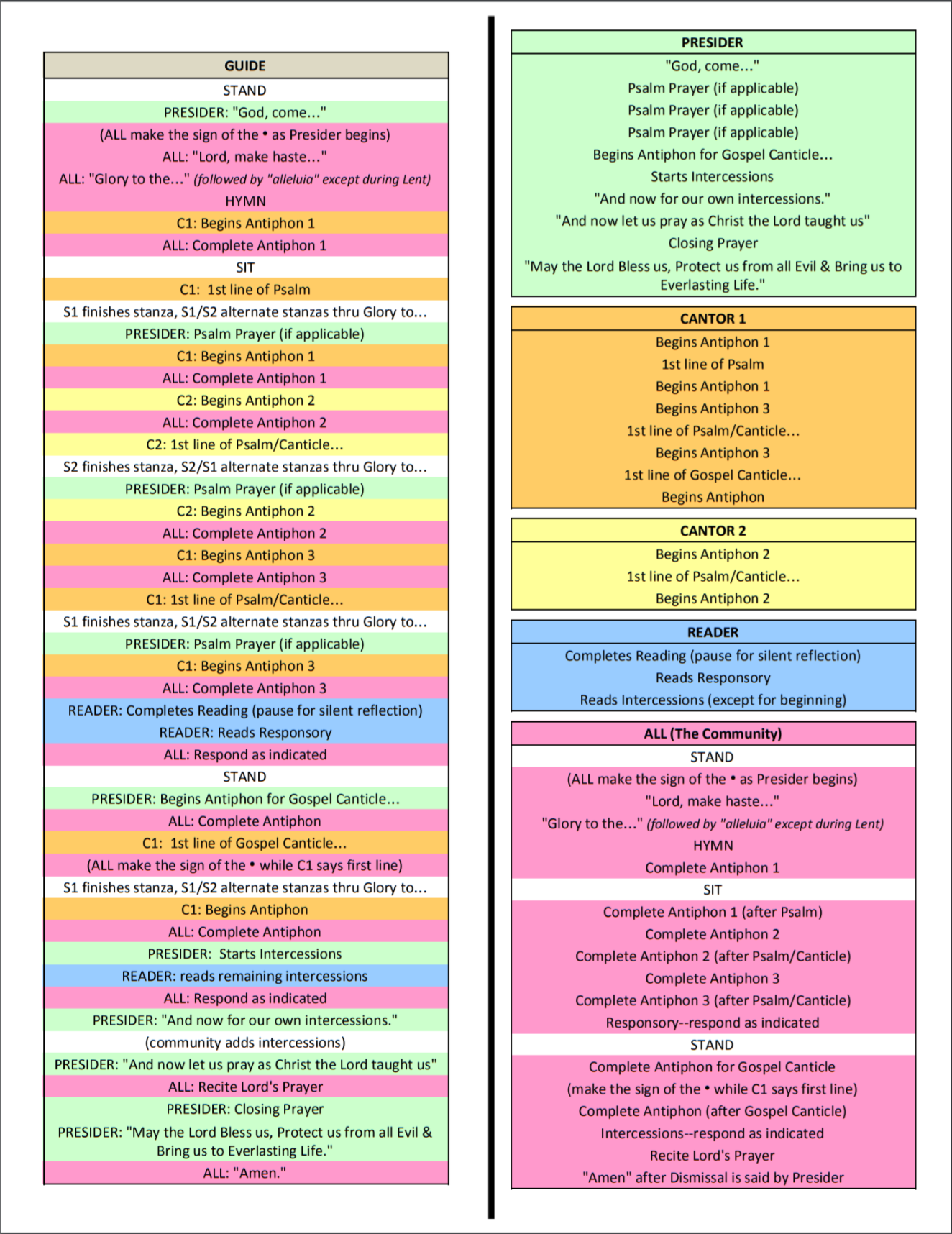
Fr. Patrick McMahon, O. Carm., in a "Carmel in the World" article in 2006 (Vol. XLV, N.1), suggested that all Carmelite communities create a Library for the ongoing education of their members. Listed below is his Five Year Plan for accomplishing this:
YEAR ONE
The Collected Works of St. John of the Cross , Translated by Kieran Kavanaugh, OCD, and Otilio Rodriguez, OCD, http://www.icspublications.org/bookstore/cross/b_cross01.html
The Collected Works of St. Teresa of Avila, Vol. 1, Translated by Kieran Kavanaugh, OCD, and Otilio Rodriguez, OCD, http://www.icspublications.org/bookstore/avila/b_avila01.html
The Collected Works of St. Teresa of Avila, Vol. 2, Translated by Kieran Kavanaugh, OCD, and Otilio Rodriguez, OCD, http://www.icspublications.org/bookstore/avila/b_avila02.html
The Story of a Soul: The Autobiography of St. Therese of Lisieux, Translated from the Critical Edition by John Clarke, OCD, http://www.icspublications.org/bookstore/lisieux/b_lisieux01.html
St. Therese of Lisieux: Her Last Conversations, Translated from the Critical Edition by John Clarke, OCD, http://www.icspublications.org/bookstore/lisieux/b_lisieux02.html
Complete Works of Elizabeth of the Trinity, Vol. 1: Major Spiritual Writings, Translated by Aletheia Kane, OCD, http://www.icspublications.org/bookstore/trinity/b_trinity01.html
The Selected Poetry of Jessica Powers, Edited by Regina Siegfried and Robert Morneau, http://www.icspublications.org/bookstore/others/b_others07.html
Writings and Converstions on the Practice of the Presence of God, by Brother Lawrence of the Resurrection, OCD, http://www.icspublications.org/bookstore/others/b_others09.html
Mary the Contemplative, by Joseph Chalmers, O. Carm., http://carmelites.info/edizioni/book%20advertisements%20in%20eng/chalmers.Mary%20the%20Contemplative.htm
Prophet of Fire by Kilian Healy, O. Carm., http://carmelites.info/edizioni/book%20advertisements%20in%20eng/healy.Prophet%20of%20Fire.htm
Prayer Life in Carmel: Historical Sketches by Redemptus Valabek, O. Carm., http://carmelites.info/edizioni/book%20advertisements%20in%20eng/valabek.Prayer%20Life%20in%20Carmel.htm
Profiles in Holiness I: Some Saintly Members of the Carmelite Family, by Redemptus Valabek, O. Carm., http://carmelites.info/edizioni/book%20advertisements%20in%20eng/valabek.Profiles%20in%20Holiness,%20vol%20I.htm
The Carmelite Way: An Ancient Path for Today's Pilgrim by Joseph Chalmers, O. Carm., http://www.amazon.com/Carmelite-Way-Ancient-Todays-Pilgrim/dp/080913652X/ref=sr_1_1?ie=UTF8&qid=1312934173&sr=8-1
At the Fountain of Elijah by Wilfrid McGreal, O. Carm., http://www.amazon.com/Fountain-Elijah-Carmelite-Traditions-Spirituality/dp/1570752923/ref=sr_1_1?s=books&ie=UTF8&qid=1312934691&sr=1-1
Reunion With Christ
Fr. Onesmus Muthoka, OCarm, Kenya
St Francis of Assisi Catholic Church
861 Wildwood Lane, Grapevine TX 76051
Read more: North Texas Region Lay Carmelite Day of Reflection April 29, 2023 Reflection Questions

South Texas Region Communities
1) Spring
2) Sugar Land
4) Galveston
5) El Paso
North Texas Region Communities
6) Texarkana
7) Richardson
8) Fort Worth
9) San Angelo
10) Midland
Information for Members of Our Lady of Mount Carmel #4403
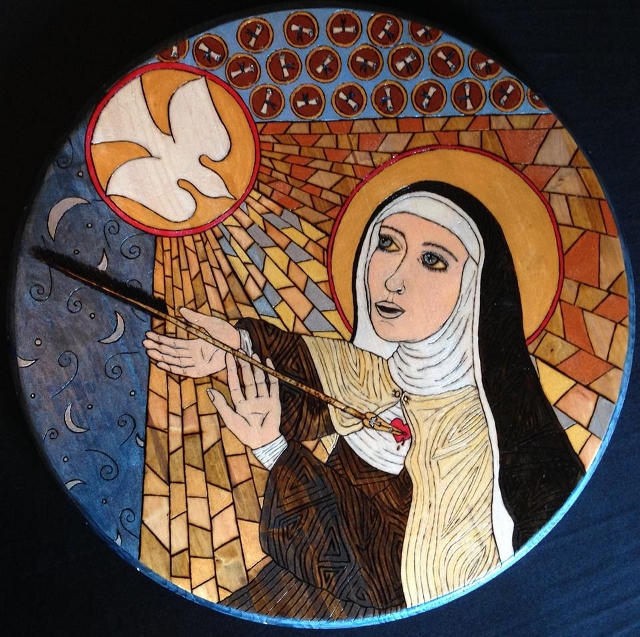
Our Carmelite Charism
From the Carmelite Constitutions (1995) #14: "To live a life of allegiance to Jesus Christ and to serve him faithfully with a pure heart and a clear conscience": these words, inspired by St. Paul, are the basis for all the elements of our Charism; they are the foundation upon which St. Albert constructed our way of life. The particular Palestinian context in which the Order originated, and the approval bestowed by the Holy See at the various stages of the Order's historical evolution, gave new meaning and inspiration to the way of life set out in the Rule. Carmelites live their lives of allegiance to Christ through their commitment to seek the face of the living God (the contemplative dimension of life), fraternity, and service (diakonia) in the midst of the people.
Ministry
- The purpose of the Church is to spread the kingdom of Christ on earth so that all may share in that salvation brought about by the Cross. [80] (The Third Order Rule of Carmel)
- Since it is the proper calling of lay people to live in the world and in the midst of secular affairs, they are called upon by God to carry out this mission of the Church so that there is a Christian yeast in the temporal activities which they are deeply engaged in. [83] (The Third Order Rule of Carmel) Our lifestyle, which must be open and welcoming, invites us to share with others the communion of hearts and the experience of God which are lived within the community.(RIVC)
- Faithful to the Order’s spiritual heritage, we focus our work, in its various dimensions, on increasing the search for God, and we invite men and women of our time to the experience of contemplation, sharing with them the richness of our spiritual tradition.(126) Our life as a contemplative community becomes a credible witness to the possibility of encountering the Other and others through silence, openness and sincere communication.(127) (RIVC)
Community
- Sharing the Experience of God
- “True community is formed from the relationship each has, not with the others, but with God at the center of the community.” (John Welch, The Carmelite Way)
- Lay Carmelites commit themselves to co-operating with other members of the Carmelite family and with the whole Church so that it may realize its calling to be missionary in every circumstance and situation. [79] (The Rule for the Third Order of Carmel}
- Lay Carmelites have monthly meetings and formation classes.
- Lay Carmelites participate in an annual Day of Reflection and a weekend silent retreat.
Prayer
- ‘Prayer is life, it is not an oasis in the desert of life’, claimed Blessed Titus Brandsma. [67] John Paul II confirms that in Carmel ‘prayer becomes life and life flourishes in prayer.’ [68] (The Rule of the Third Order of Carmel)
- Following the charism of the Carmel Order, the Lay Carmelite lives a life of intense prayer. We do this through:
-
- The Sacramental life - Eucharist
-
- Liturgy of the Hours - Morning (Lauds), Evening (Vespers), and optionally, Night (Compline) prayers
-
- Lectio Divina - Contemplative
-
- Devotional prayers and practices of the Catholic Church - wearing the Scapular of our Lady of Mount Carmel, the rosary etc.
- “The challenge of Carmel is to seek God’s presence in prayer while living an active, busy life in the midst of the world.” (Provincial Statutes I, 3:1)
Watch a U-Tube video on an Introduction to Carmelite Spirituality:
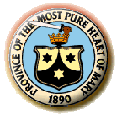 Email your inquiry to This email address is being protected from spambots. You need JavaScript enabled to view it.
Email your inquiry to This email address is being protected from spambots. You need JavaScript enabled to view it.
Please notate "Carmelite Inquirer" in your subject line correspondence.
**We DO respond to every request.
Thank you and God Bless.
Texas Region
USA
New Question and Answer Series
Dear Directors and Regionals!We are still basking on our awesome Convocation held last month. I was happy to meet so many of you! I'm currently reading all of the evaluations that were received and the Interprovincial Commission (our planning team for the convocation) will review them all this fall. Thank you for taking the time to submit them! At our Leadership Day on Friday morning there were many questions written down for answering by our panel of Commission members and the Provincial Coordinators. Too many to answer during the time available that day. I took all of the questions with me and have decided to start a Question and Answer Series in the attempt to clarify your questions and /or concerns. I'll try to send an e-mail out on Friday afternoon which will address one or two questions at a time. Eventually, all will be covered. You will note that usually, I will throw in a little personal philosophy in regard to the question as well.
So here goes with Question and Answer #1:
- QUESTION: In regard to elections: I know a candidate must attend 75% of community meetings but what about “other functions” such as retreats and days of recollection? Does this mean we need to keep records about who is attending the retreats and days of recollection?
ANSWER: 75% attendance at meetings and events is required for active and passive voice (to be placed on a ballot and/or to vote in an election). Local community policy would determine whether or not a community or regional sponsored retreat or DOR is a required event. Some communities include one or the other. Our Statutes (CC, Part II, Chapter 12, No. 7) state that all Lay Carmelites should attend all meetings and events of the community. If a special event is required as local community policy then, yes, it must be included in the attendance record.Although I believe attending an annual retreat is essential to growth in our Carmelite vocation, I would not make a community or regional retreat a required event (for attendance) due to the cost involved for most weekend retreats. DORs, however, are an ideal way to assure most members can attend a special event annually. (CAP August 2, 2019)Wishing you all a peaceful and contemplative August!
Sincerely in Carmel,Cindy Perazzo
Provincial Coordinator

Used by permission from Fr. Mario Esposito’s talk at the Lay Carmelite Convocation, July 2011, entitled “Our Future is Formed by Our Identity.”
The original group on Mt. Carmel came from many European countries, from certain groups within the church and they were overwhelmingly lay people, most likely with some clerics among them. Essentially, Carmel began as a lay movement. Carmel began at the end of the 11th and beginning of the 12th centuries, and not unlike today, it was a time of tremendous religious and social change.
The age of the monasteries and monks was yielding to the new movements and the friars. The cities, the guilds, commerce, everything was changing. The Holy Spirit was calling forth within the church new responses to these new realities and the seed of Elijah’s inspiration on Mt. Carmel burst forth into new fruit, but not in a vacuum – rather, among lay people.
The historians tell us that the first Carmelites came from four groups – each group brought something to the mix of Carmel and each group left something of themselves in the Rule. To this day, their spirit and our future identity will reflect these elements. I would suggest we need to hold on to those elements to bring us safely into the future.
The first group on Mt. Carmel included four groups each of which could be asked the question that God asked Elijah on Mt. Horeb, “Why are you here?”
1) The Pilgrims were men and, we presume women too, who left Europe and came to the Holy Land to be in the land of Christ, near Christ. In those days pilgrimages were not an 8-day journey to the Holy Land and back, but a long, dangerous, time-consuming process of journeying. Many died on the open seas.
We might say that this is the group searching for Christ, wanting to get closer, traveling, not standing still, on pilgrimage, wanting to follow in Christ’s footsteps.
Why are you here on Mt. Carmel?
I am searching for God, for the face of the living God in my/our world.
The pilgrims represent the thread in Carmel that searches for God – something we must do today and in the future: to be willing to pick up and let go and search to uncover and find amidst the change and pain, the living and loving face of God. This search in prayer and discernment is part of our identity to bring us into the future.
2) The Penitents were also men, and we presume some women, who left Europe and came to the Holy Land to be in the land of Christ, near Christ, but with a different purpose: they took upon themselves a penitential, simple, poor life in order to undergo a deep spiritual conversion, turning from sin to virtue.
Fasting and abstinence was part of their life. We can say that this is the group undergoing conversion for Christ.
Why are you here on Mt. Carmel?
I want to be totally converted to Christ, to become new, purified in mind and spirit and heart.
The penitents represent the thread in Carmel that seeks to be changed into the new man, the new person in Christ and who accepts the call to be purified and whole, and who invites others to live in this kind of honesty and wholeness. The penitent stands as a witness to integrity: a virtue which we need now and in the future in order to be able to listen to ourselves, others and our world with clean ears, to see with clean eyes, to speak with a clean tongue and to love with a clean heart, God’s heart. Lifelong conversion and change is part of our identity to bring us into the future.
3) The Crusaders the third group we may sometimes forget about. Many of the first Carmelites were Crusaders; men who left home and family to fight for Christ, to free the holy places from pagan hands, ready to give their lives for Christ. We can sense this group in the Rule of St. Albert which, borrowing the imagery of St. Paul to the Ephesians, speaks of “putting on the armor of God” fighting with the sword of the Word, deflecting the arrows of the enemy, & protecting ourselves with faith. The only offensive weapon in their arsenal, or ours, is the Word of God.
No longer fighting to free the soil of the Holy Land from the Saracens. This group now in community on Mt. Carmel is fighting for the holy land of their own souls, to free themselves from the snares of the devil.
Why are you here on Mt. Carmel?
To fight for Christ and the establishment of His Kingdom. We can’t be naïve: in today’s world and in the future, we need to be ready to fight and die in the witness of our faith in Christ. The Church today needs witnesses and prophets, prayerful and courageous, to speak up for “Jesus, the way, the truth and the life.”
We must all, in a God-like way fight for the Kingdom, for justice, not armed with bullets, but charity, the Word of God, and conviction. Now and in the future, readiness for combat, zeal is part of our identity.
4) The Hermits finally and most well-known, the last group on Mt. Carmel were the Hermits – those who seek to be alone with Christ. They also are searchers, penitents and spiritual fighters, but their goal is union, a solitary abiding with Christ, even if they live as a community of hermits.
These early Carmelites sought to live under the inspiration of Elijah, the man of God, the model monk, the celibate, who stood aside from everything to commune with God in prayer.
They turned to Mary, the model of the soul perfectly turned toward God as their model and Patroness, their Lady.
Why are you here on Mt. Carmel?
I am here to be alone with Christ in silence and prayer, to dwell with Him in the unity of the Father and the Spirit.
Now and in the future, this call to be alone with God in the eremitical manner, to savor God’s presence in the cave, the cell of our hearts, within our homes, family and church, will and must be part of our identity.
Married, single, widowed, the Lay Carmelite of today and the future in the fullness of their vocation will need to:
- Search for Christ – like the pilgrims to Mt. Carmel
- Be converted to Christ – like the penitents on Mt. Carmel
- Fight for Christ – like the crusaders going to Mt. Carmel
- Stay with Christ – like the hermits gathered on Mt. Carmel
If all of us remain faithful to these roots of our vocation, the future, directed by the Holy Spirit will form itself, according to our identity.
The following select book reviews are provided from the Lay Carmelite Communities in the Texas Region. Along with each review a link is provide where the book may be published along with a "Thumbs Up or Thumbs Down".
A Pattern for Life
By Patrick McMahon, O.Carm.
Edizioni Carmelitane, 279 Pages

Reviewed by Richard Hoyle, T.O.C.
Lay Carmelites of Divine Mercy, Spring, Texas
Father Patrick wrote this book so that Lay Carmelites would understand that the Rule of Saint Albert is the foundation of their vocations. He argues that following this Rule is what makes one a Carmelite, and the Rule is equally suitable to lay and religious members of the Order, despite some arguments that the laity should have a separate Rule.
Father Patrick made his profession in 1968 in the Province of the Most Pure Heart of Mary and served in various ministries in the Province including some years as Provincial Delegate to the Lay Carmelites. He also traveled and lectured extensively throughout the world on Carmelite spirituality and history, as well as filling several important positions in Rome and the USA. He died on 29 August 2016 at the age of 67.
The book is not “scholarly” and is intended for Lay Carmelite communities to use in developing their understanding of the Rule of St. Albert. Therefore it is a valuable resource for ongoing formation as the book presents the history of the Order and examines the Rule in the time in which it was written and its application to Carmelite life today.
The book consists of three parts: the history of the Rule, the text of the Rule and a commentary on it and finally the author’s reflections on the Rule, especially in its application to modern life.
The first part (“Background”) introduces monks and hermits as they were in the early days of the Church and describes the Holy Land, the Crusades and the original hermitage on Mount Carmel. The hermits chose a leader to approach St. Albert, Patriarch of Jerusalem, for formal recognition of themselves as a community of hermits. The eventual result was a letter from St. Albert giving them a proposed pattern for life now known as the Rule of St. Albert. In the 13th century the hermits were forced to retreat to Europe and thereafter saw great growth in the new Order. There was also a strong move to clericalization as more and more Carmelites became priests. The hermits’ vocation included total renunciation of all personal and communal wealth. Today the Carmelites own property, but all things are owned in common. Father McMahon closes the “Background” with a lengthy description of the role of the laity in the Carmelite Order in the past and today.
The second part of the book, the largest part, covers the text of the Rule chapter by chapter (incidentally, no Order has a shorter Rule.) The author’s method is to quote the chapter and explain its significance at the time of its writing with a commentary on the meaning of the words, an explanation of how the chapter affected the hermits’ lives, and how the chapter applies to Lay Carmelites today. As an example, chapter 2 refers to living a life of allegiance to Jesus Christ. The Rule was written in Latin. No translation from one language to another can be perfect and the correct choice of words is crucial because all words carry various other related meanings with them. Father Pat carefully examines the Latin word “obsequio” which can be translated as several different English words but is here translated as “allegiance” where otherwise it has been translated as “obedience”. In various ways throughout the book Father Pat explains the significance of items which are not obvious to the average reader. Then after these considerations he continues to show how the chapter applies to Lay Carmelites today. In this example he develops a theme of spiritual battle and earthly peace to conclude the examination of the chapter.
The last part of the book contains Father Pat’s reflections on topics such as the heresy of Quietism, our transformation into Christ, an apparent defense of Mohammed and Islam, the Crusades, the first hermits on Mount Carmel, and the Gospel versus politics. He then shows how much the writings of St. Paul have been incorporated into the Rule.
The following are a few representative quotes from the members of my Lay Carmelite community and their opinions were uniformly positive:
“This book provides rich explanations of how to live by the Rule of St. Albert.”
“I could not have found a better book for my formation. This book presented wonderful information for someone new to the Carmelite vocation.”
“The author did an excellent job in keeping the commentary on the Rule in lay terms! It was not a difficult read and it made for great discussion in our community meeting each month.”
“His historical acumen is beyond compare. As a professed Carmelite of many years, I enjoyed the book as well as learned a lot.”
“Some might not enjoy the lack of spiritual depth and the attention to historical minutiae in the first part of the book, but if they are patient, they will be rewarded with a series of profound spiritual insights contained in McMahon’s commentary on the Rule. Although there are other works that contain a higher level of spirituality than this work, I recommend it for ongoing formation.”
Altogether the book is a valuable resource for Lay Carmelites, especially in Formation. It is well organized, and a good reference book written in a down- to- earth fashion. There are some “typos” and other errors which good proof reading should have prevented. Also, Father Pat’s writing is somewhat one-sided at times and a more balanced viewpoint would have been more to this reviewer’s taste. (But as he was a self-described “liberal Democrat” we have to cut him some slack). Well done Father Pat!
Always Believe in Love: Selected Writings of St. Elizabeth of the Trinity

Reviewed by Mike Hansell, T.O.C.
Lay Carmelites of St. Theresa Catholic Church, Sugar Land, Texas
The Lay Carmelites of Saint Theresa Catholic Church in Sugar Land, group #2241, finished reading “Always Believe in Love: Selected Writings of Saint Elizabeth of the Trinity”, at their November community meeting for ongoing formation.
The book has excellent selections from all the types of writing from Saint Elizabeth. There are entries from her diaries and selections from letters to various people including family members, friends, priests, and others. Her poetry is represented as well as important passages from her “major writings”. The selections were very well chosen and evidently by an editor (Marian Murphy) who knows her writing well.
The advantage of reading this book with the entire Lay Carmelite group is that one can very quickly get an excellent survey of her life and spirituality. Also, there are passages in this book which are not available in other English language books on the saint, such as her diaries. The book demonstrates the intimacy of her relationships with others and her inner conversation with her Lord as well. I would suggest the book to anyone who wanted to get to know Saint Elizabeth well.
However not everyone was pleased with this selection in our group. Although no book will please everyone, there was a little more grumbling about this book than many others we’ve had in the past. The main reason is its nature of being “selections”. It seems that several members of our group prefer books with continuous content rather than a “greatest hits“ approach. There is a need and desire for continuous, developing thought, and I think that is something worth supporting, as it is a positive trait.
If I were to take a guess at the number of people who really loved the book, I would say it would be about 1/4. There was another 1/4 that did not like the book and expressed it, and about 1/2 seemed to like it like other good books. However, I believe everyone without exception was impressed by Saint Elizabeth’s mysticism.
In summary, I think “Always Believe in Love“ is a good book for the lay Carmelites in that it is short, it is deep, and it is a great survey of Saint Elizabeth’s life and spirituality. At the same time, I can understand people preferring books with continued thought rather than simply selections. It might be better, for example, to find a good short summary of Saint Elizabeth’s life and choose to read the book of her major writings instead. Still, it’s not a bad selection due to the sheer quality of Saint Elizabeth’s output. She is a gem of the Carmelite order and should be well known and loved by all lay Carmelites. She does a spectacular job of translating the mystic life to the laity in the modern world and this book is a great digest of all her extant writings.
THE HIDDEN FACE – A Study of St. Therese of Lisieux by Friederike Gorres
From Ignatius Press (410 pages)
At the beginning of THE HIDDEN FACE – A Study of St. Therese of Lisieux by Friederike Gorres, is a surprising quote by one of the sisters in Therese’s convent: “Sister Therese will die soon. What will our mother prioress be able to write in her obituary? She entered our convent, lived and died – there really is no more to say.” This book holds those title words, ‘hidden face’, a depth that easily escapes most di-hard St. Therese devotees, including me.
Everything I thought I knew about Therese seemed to be enlarged and clarified in reading this in depth look at her personality traits and emotional scars. In her introduction, Gorres goes beneath the surface of Therese’ beautifully simple, though deep, “PORTRAIT OF A SOUL’ to examine the cultural backdrop of the times in which it was written. She challenges her readers to set aside the flowery French bourgeoisie language that seems almost theatrical in the little book and to think more deeply of the very private and ‘hidden’ face of St. Therese. This book, less known perhaps, is a psychological sketch of Therese as a young girl, who suffered loss of her mother in early childhood, then loss of two of her older sisters, both who’d become surrogate mothers to her, to the convent. It expresses in beautiful and pointed manner, Therese’s sadness at the reality of her beloved father’s mental illness and depression, her own grappling with her response to God through entering Carmel and her desire to be present to her father in his frailty and illness.
Anyone who has ever worked among a group of women can identify with the young Therese’s mixed emotions in the convent serving among the older, often austere nuns who, for the most part were confused and at times even irritated by her desire to enter Carmel at such a young age. The human arrows of judgment and unscrupulous comments did not escape Therese even in her beloved Carmel. No one but her esteemed Lord knew the hurt, confusion and bitter sweetness of those years Therese spent hidden – claiming to ascend the elevator of heaven by offering those unnoticed pangs to Jesus in her ‘little way’. Therese was once described as a ‘Steel Magnolia’ rather than ‘The Little Flower’. I agree! This in-depth portrait will elicit much prayerful thought and guide readers to perhaps cherish that which is hidden as they strive to immolate Therese’s Little Way as they grow in faith. This book is excellent spiritual reading anytime, but perhaps most especially during Lent.
--Submitted by Therese Thomas
Nothing Can Stop God from Reaching Us: A Dachau Diary by a Survivor
by Raphael Tijhuis, O.Carm.

Brother Raphael Tijhius, O.Carm., was born on October 10, 1913. He entered the Carmelite Order in Boxmeer, the Netherlands, in 1932 and made his simple profession in 1933. Shortly after profession Brother Raphael moved to the Mainz, Germany, Carmelite Monastery expecting to live the life of a simple brother, which he did for only a few short years.
On July 25, 1940, Brother Raphael was arrested by the Gestapo and thus began a 5-year journey of purification through several jails and prisons at the hands of the Nazis. Nothing Can Stop God from Reaching Us is his diary of life during those 5 years as he tried to live as best he could in an atmosphere of hatred, fear and uncertainty.
Through the terror, which was also known by thousands of innocent people, Brother Raphael experienced many powerful moments of God’s presence within him and through the others he met along his way. It will be interesting to the reader that during this experience Brother Raphael crossed paths with two well known Carmelites in the Dachau prisons – Fr. Titus Brandsma, O.Carm. and Brother Hilary Januszewski, O.Carm., both declared Blessed within the last decade.
The Diary itself is translated and edited in a very easy-to-read manner. Sections of Brother Raphael’s own words are supplemented by interesting commentary which explains more fully the situation and background of each section.
This book will be of great interest to those who study this particular time period with its very Carmelite slant and for those who have a particular curiosity in the two above mentioned blesseds. The pictures and commentary contain a number of new informational pieces that may not have been seen before by the Lay Carmelite.
Nothing Can Stop God from Reaching Us: A Dachau Diary by a Survivor, can be purchased directly through Carmelite Media, phone: 520.325.1537x117,email: This e-mail address is being protected from spambots. You need JavaScript enabled to view it , mailing address: 1540 East Glenn, Tucson, AZ, 85719.
C.A. Perazzo
December 2010
Story of a Soul, The Autobiography of St Thérèse of Lisieux

|
Third Edition Translated from the Original Manuscripts by John Clarke, O.C.D. ICS Publications, Washington, DC, 1996 Original manuscript published as “Histoire d'une Ame” by St. Paul Printing Company, Bar-le-Duc, September 1898 Reviewed by Mattye Thompson, LC - O.Carm This beautiful book is a labor of love requested of St. Thérèse of Lisieux by her blood sisters who were cloistered with her at Carmel. It was requested two and a half years before her death by tuberculosis on September 30, 1897, at the age of 24. She dedicated and entrusted her work to her sister, Mother Agnes of Jesus (Pauline) upon its completion, three months prior to her corporeal end. St. Thérèse of Lisieux's own words in regard to the manuscripts were: “I feel that my mission is about to begin, my mission to make God loved as I love Him, to teach souls my little way.” She describes her “little way” as the “way of spiritual childhood, the way of trust and absolute surrender” Her instructions to Mother Agnes were implicit...”After my death, you must not speak to anyone about my manuscript before it is published; you must speak only to Mother Prioress about it. If you act otherwise, the devil will lay more than one trap to hinder God's work, a very important work!” This incredible work of St. Thérèse of Lisieux is divided into three Manuscripts: A, B, and C. |
Manuscript A encompasses most of Thérèse's life, from her birth through the age of twenty-two. During these years we learn of her conversion step by delicate step from the impetuous child she was to the obedient servant of God she became. Here we learn of her passion for Christ and her thirst for solitude in Him. She teaches us here how to begin our walks with God – releasing everything to embrace ALL of Him.
Manuscript B focuses on her twenty-third year, in which she discovers her true vocation, and first enlightens readers to her littlest ways. These pages speak tomes of what it is to truly love as Christ loves in the science of love. It is a work of humility and beauty. Thérèse reveals what it is to prepare oneself to fully embrace being the bride of Christ as she bares her spirit in this text. Much of what she shares here is written in the style of a parable.
Manuscript C reveals her trial of faith in her final and twenty-fourth year. Two very key points discussed here are the concepts of poverty and charity. Thérèse defines them on levels that are so very basic yet universally expansive through her little way. Here too, we first learn of her impending death beginning with her reaction to the first hemoptysis and her attitude to suffering in death as she finally succumbs to her Beloved.
The footnotes are not wont to be missed or glossed over. They contain very pertinent information supportive of the text. The Appendices also are treasures not to be forsaken.
Level of Difficulty: Beginner/Inquirer – a great book to begin one's journey to Carmel.
Listen to the Silence: A Retreat with Père Jacques
Translated and Edited by Francis J. Murphy
Washington Province of Discalced Carmelites, Inc. 2005
Reviewed by Seola “CeCe”. Edwards, T.O.Carm.____________________________________________
This small book is a complete transcription of a retreat given by Père Jacques to the Carmelite nuns of Pointoise, France in September 1943 during the time of the German occupation. The Pointoise Carmel is 20 miles northwest of Paris and dates back to 1605. It is the oldest operating Carmelite community in France. Père Jacques was a Carmelite priest who was born Lucien-Louis Bunel in Barentin, France (near Rouen) January 29, 1900. He was ordained a diocesan priest in 1925, but longed for a stricter, more contemplative life. So in 1931 he entered the Carmelite monastery in Lille and made his first Carmelite profession of vows there in 1932 and final vows in 1935. He was an outstanding teacher and lecturer. The Carmelite leadership asked him to found a premier Catholic preparatory school for boys. His Petit Collège Sainte Thérèse de L’Enfant-Jésus in Avon became a model of educational excellence, one of the most highly regarded schools in France. However, things changed drastically after the Germans took over in 1939. Père Jacques had hired a Jewish professor to teach science at the Petit-Collège. He was sheltering three Jewish boys who were in grave danger of deportation and death. All were arrested, including Père Jacques, on January 15, 1944. The Jewish professor and 3 students were deported directly to Auschwitz and executed upon arrival. Père Jacques was condemned to the Mauthausen concentration camp in Austria where he quickly won the respect of his fellow prisoners for his selfless care of the sick and dying, and to whom he gave half his meager ration of food. All were freed when the Americans liberated the camp in May 1945. By then Père Jacques weighed only 75 pounds and had terminal pneumonia. He died 4 weeks later in Linz, Austria. His remains were returned to France where he was buried in the monastery garden of the Petit-Collège. He was posthumously honored by both Israel and the United States for his efforts on behalf of the Jews during the war. The cause for his Canonization was opened in 1990.
Listen to the Silence: A Retreat with Père Jacques is rich in meditation material. It places us with the Carmelite nuns in their Pointoise Chapel receiving this incredible retreat. Père Jacques’ talks are inspiring, warm reflections on topics of interest to his audience such as: contemplative prayer life, solitude, Christ the object of our prayer, His Blessed Mother, the Holy Spirit among many other subjects. The transcription texts of that September 1943 retreat were preserved in a “curiously providential way” as the editor/translator, Rev. Dr. Francis J. Murphy, tells us in his Introduction,
“… It was the custom of that era, before the invention of tape recorders, for one of the sisters in the community to record the retreat conferences in shorthand and subsequently to type up her notes. Then copies of the text of each conference would be given to all the sisters for their future reflection and meditation. The resulting transcription is, on the whole, remarkably complete…”
Beginning on Monday September 6, 1943 for seven days, Père Jacques gave two conferences each day, for a total of 14 conferences. He begins by telling the nuns:
“Since God is invisible he needs intermediaries who lend him their lips, their bodies, their hearts and their minds. The priest is such a person. By a kind of “surrender of his own personality,” the priest puts his whole being at the disposal of God. The priest should then say only what God wishes to be said. Therefore, do not focus on the human person who will be speaking to you. Rather, listen to the voice of God and you will discover, at one moment or another, something amazing. The message of the retreat will prove to be so applicable to your needs, your present situation, and your personal concerns, that you will have the impression that the retreat master is speaking to you and you alone, without being aware of it.”
Several pages of photographs from the period of the retreat are included: one shows the entrance to the Pointoise Monastery Chapel (on the left is the shutter for Père Jacques’ guest room window), another photo is of the chapel where he gave his conferences and another is of the chair and grill where he gave counseling and the Sacrament of Penance to the nuns.
At the beginning of the 6th conference Père Jacques advises the nuns to focus their full attention on the living presence of God and also to link themselves with “the Virgin Mary, whom we solemnly honor today on the feast of Our Lady of Pointoise.” In the footnotes we find that September 8 was celebrated locally as the feast of “Notre Dame de Pointoise”. I had never heard of Our Lady of Pointoise.
The most explicit reference to World War II, then at its height, occurs in Conference 8 when Père Jacques says, “While I was speaking to you this morning, several bombs landed only twenty odd miles from here. Countless victims died. They then had to appear before God and render an account of their lives. We will likewise be called one day to render an account of our lives. If we fail the test, we cannot begin all over again.”
A few months after completing this retreat Père Jacques returned once again to the Pointoise Carmel to give another retreat in January 1944 and this would be his very last one, for he was arrested a few days after completing it.He was sent to the Mauthausen concentration camp in Austria. The cruelty and harshness of his imprisonment resulted in his death June 2, 1945. This book is an otherwise lost opportunity to hear God speak through Père Jacques. It is like being there with him and the Pointoise nuns making the retreat.It is a spiritual experience you won’t forget.




